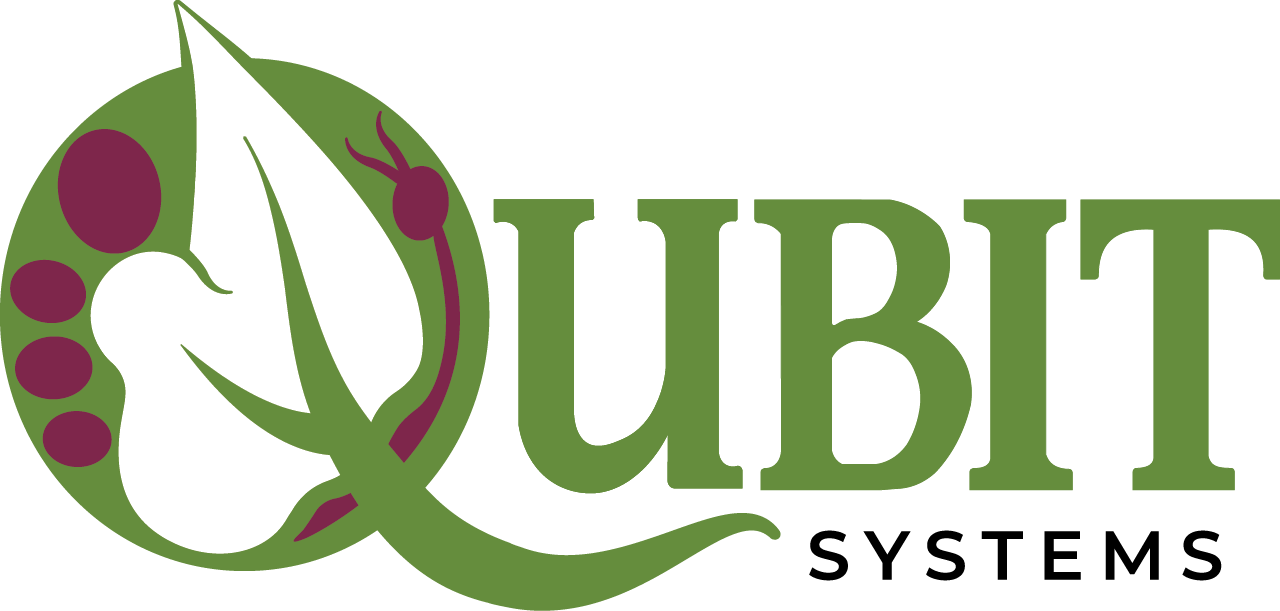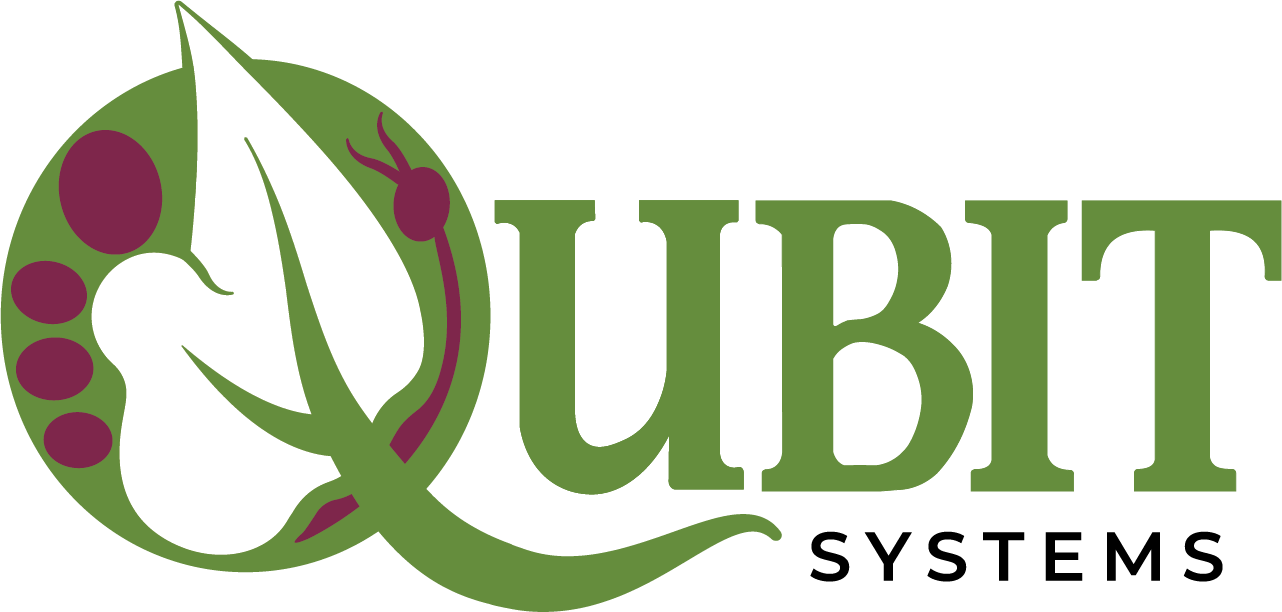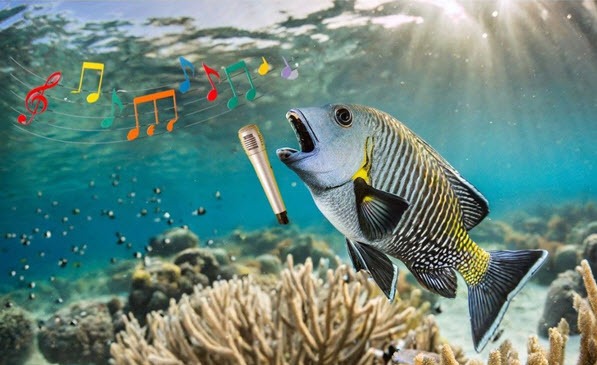
Scientists are being increasingly inventive in the desperate race to preserve the degradation of ecosystems on this precious planet of ours. A recent story in the Guardian newspaper relates that with the worst mass coral bleaching on record reported last week, Professor Peter Harrison at Southern Cross University in Australia is offering a beacon of hope. Professor Harrison’s research team is attempting to repopulate degraded reefs using a form of “coral IVF” involving the breeding of heat-tolerant reproductive coral in the lab and surrounding bleached coral in a cone-shaped net that acts like a giant coral condom. To encourage coral larvae to populate a degraded reef, recordings of fish sounds from a nearby healthy reef are played as an attractant. Professor Steve Simpson at the University of Bristol in the UK, who collaborates with Professor Harrison, likens the technique to “sowing a field that will become a forest again.” Apparently, coral larvae are particularly attracted by low-frequency grunts, croaks and rumbling sounds. After a recent solo performance in my local men’s choir, I’m willing to offer my services to these inventive researchers completely free of charge.
Dr. Stephen Hunt. President and CEO, Qubit Systems Inc.
CISME for Measuring Coral Metabolism In Situ
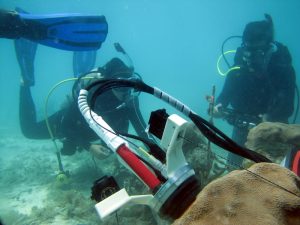
Qubit’s unique, diver-deployed CISME coral metabolism system is used to monitor coral photosynthesis, respiration and (de) calcification in situ. The system measures changes in oxygen and pH during short incubations in which water flow and light levels are user-controlled. Respiration (R) and photosynthesis (P) rates are calculated from concentration changes in oxygen and carbon dioxide within the enclosed volume. For a recent publication using CIMSE see:
Dellisanti W. et al. 2023 Seasonal drivers of productivity and calcification in the coral Platygyra carnosa in a subtropical reef. Front. Mar. Sci. https://doi.org/10.3389/fmars.2023.994591
For details of all Qubit products for Aquatic Biology click HERE
Qubit and the Solar Eclipse
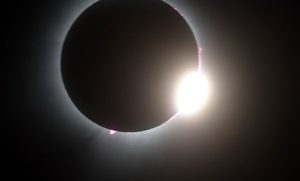
In Kingston Ontario, the home city of Qubit Systems, we were extremely lucky to be in the path of the total solar eclipse on April 8th, allowing my wife to snap the diamond ring above (she’d always wanted one). If ever there was an event to ponder the Earth’s dependence on solar irradiance, surely this was it, so the Qubit staff were given the day off to bask in the corona. What an awe-inspiring show! – though I was somewhat taken aback when a neighbour requested I explain, in scientific terms, the difference between a total solar eclipse and night (maybe he’d been basking in Corona). For anyone similarly confused, I refer you the fine folk at NASA: https://science.nasa.gov/eclipses/types/.
For those of you more conversant with the biophysics of sunlight, read on…
Hyperspectral Measurements
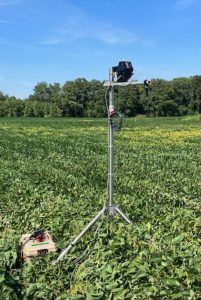
Qubit is proud to be the North American distributor for JB Hyperspectral of Dusseldorf, the manufacturer of a range of products for measuring reflective indices (NOX and ROX) and solar-induced fluorescence (FLOX). The latest product in this line is the NOX BOX – for continuous measurement of up-welling and down-welling radiance in the visible to near infrared region (1650nm). It measures spectral data of high resolution (approximately 3 nm), and is built to withstand permanent outdoor installation. It is fully autonomous in its operation, housed inside a rugged weatherproof case with low power consumption. The NOX is an extension of the ROX system, that has a narrower spectral range. It is typically installed on tripods or towers with the upward channel pointing at the sky and the downward channel pointing at the target, with a field of view of 25-degrees. For more on NOX, ROX and FLOX applications, click HERE.
EARTH DAY: Studying Soil
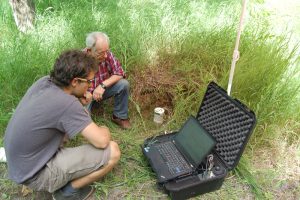
Some fun facts about soil to amaze your friends:
- About half of the Earth’s species live in the soil.
- Only 1% of the organisms living in the soil have been identified to date.
- One gram of soil can harbour a greater number of organisms than all the people on Earth.
- 95% of food production relies on soil.
Now for the less fun stuff…
Soil erosion and degradation are major problems resulting from large scale agricultural use of fertilizers and irrigation, as well as non-sustainable forestry. Conservation of soil and the soil microflora is, therefore, fundamental to global food security. To help in these efforts, Qubit’s Q-Box SR1LP Soil Respiration Package ($13,500 US) is designed for short-term measurements of soil respiration and water loss in field conditions. Measurements of soil temperature, soil moisture and atmospheric pressure are also conducted. The battery pack included with the package provides approximately 11 hours of field use. Soil samples can also be taken for assessment in the lab when placed in a flow-through chamber. As with all our Q-Boxes, the modular design allows for easy substitution of components. Thus, the SR1LP can be converted into our NF1LP Nitrogen Fixation Package by the addition of a H2 Analyzer and a gas pump, as well as appropriate sample chambers. We also manufacture a range of Methane Analysers that can be used with the SR1LP, or independently, to monitor greenhouse gas emissions.

We have been using the Q-Box AQUA respirometry package for a year and have been impressed with the quality and versatility of the system. The mechanical systems are well designed and easily serviced and the software is intuitive and flexible enough for use in diverse applications. The technicians at Qubit are outstanding.Dr. Tyson MacCormack, Biology Department, Mount Alison University, New Brunswick, Canada
